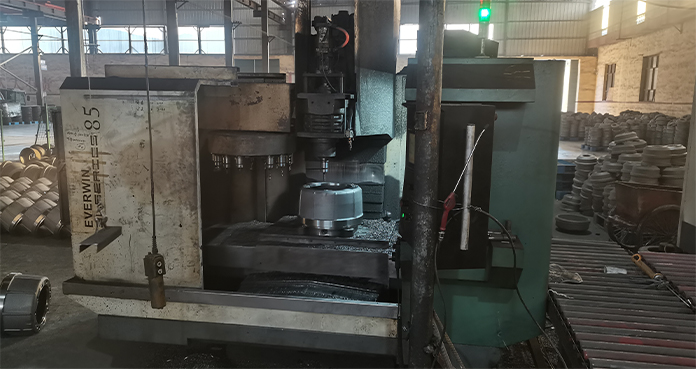Aug . 06, 2024 11:16 Back to list
Choosing the Right 7 Inch Trailer Brake Drums for Enhanced Towing Safety and Performance
Understanding 7-Inch Trailer Brake Drums
When it comes to trailer safety, one of the critical components that often goes unnoticed is the brake drum. The 7-inch trailer brake drum is a significant part of the braking system, ensuring that your trailer comes to a secure and controlled stop. Understanding its function and maintenance can prolong its lifespan and enhance safety during towing.
What is a Brake Drum?
A brake drum is a cylindrical component that is part of a drum brake apparatus. When the brake is engaged, brake shoes are pushed outward against the inner surface of the drum, creating friction that slows down or stops the trailer. The 7-inch designation refers to the diameter of the drum, which is common in utility trailers, smaller boat trailers, and other light-duty applications. While 7-inch drums are ideal for lighter loads, heavier trailers typically require larger drums for more effective braking power.
Importance of Brake Drums
Brake drums are essential for maintaining the stability and safety of trailers. Unlike disc brakes, which use a different mechanism for stopping, drum brakes tend to provide better holding power. This is particularly advantageous when trailers are parked on inclines or uneven surfaces. Moreover, drum brakes can be more effective in wet conditions because the design allows for better water displacement, making them less prone to brake fade compared to disc brakes.
Installation and Compatibility
When selecting 7-inch brake drums, it is crucial to ensure compatibility with your trailer's overall braking system. This includes considering the axle type, brake shoes, and the weight of the trailer. Installing the wrong size drum can lead to inefficient braking, increased wear on components, and even brake failure. It is advisable to consult with a professional or refer to your trailer's manufacturer guidelines for the correct specifications.
7 inch trailer brake drums

Signs of Wear and Maintenance
Like any mechanical part, brake drums require regular maintenance to ensure reliability. Common signs that your drums need attention include unusual noises during braking, vibrations, or decreased braking efficiency. Over time, the friction material of the brake shoes can wear down, and the drum itself may develop grooves or become warped due to excessive heat and friction.
To maintain the integrity of your brake drums, regular inspections are essential. This involves checking for cracks, measuring the drum's diameter, and ensuring that it is within manufacturer specifications. If the drum has become too worn or damaged, it should be replaced immediately.
Upgrading Your Brake System
For those who regularly tow heavier loads or experience longer braking distances, upgrading to larger brake drums or transitioning to disc brakes might be beneficial. Larger drums typically provide better heat dissipation and improved stopping power, making them more suitable for high-demand applications.
Conclusion
In summary, the 7-inch trailer brake drum plays a vital role in the safe operation of lighter trailers. Understanding its function, maintenance requirements, and signs of wear can prevent dangerous situations on the road. Regular inspections and appropriate replacements are critical not just for compliance but also for achieving peace of mind when towing. Whether you are a seasoned trailer owner or a novice, ensuring that your braking system is in optimal condition is fundamental for safety on the roads. Always prioritize maintenance and stay informed about the best practices for your specific trailer needs.
-
Scania Brake Drums: OEM Quality for Optimal Safety & Durability
NewsAug.16,2025
-
R.V.I: Advanced Remote Visual Inspection for Precision
NewsAug.15,2025
-
Discover HYUNDA: Innovative Vehicles, Equipment & Solutions
NewsAug.14,2025
-
R.V.I: Unlock Advanced Insights & Real-time Performance
NewsAug.13,2025
-
Kamaz Brake Drum: Durable & Reliable for Heavy Duty Trucks
NewsAug.12,2025
-
Heavy Duty Iveco Brake Drum - Premium Quality & Safety
NewsAug.11,2025
